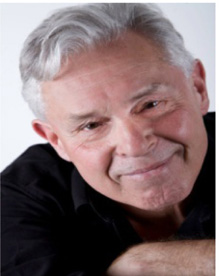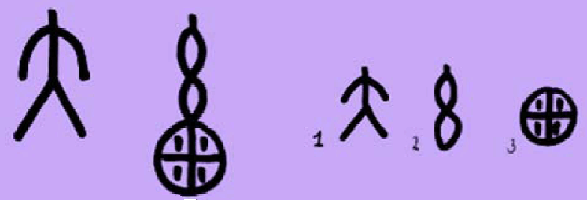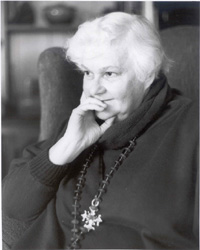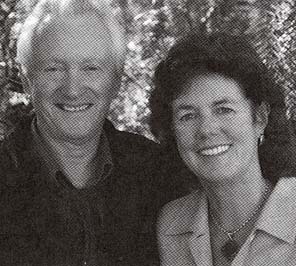by Stephen Karcher
Originally printed in the Fall 2010 issue of Quest magazine.
Citation: Karcher, Stephen. "The Power of Great and Small." Quest 98. 4 (Fall 2010): 139-143.
 I Ching, the "Classic of Change," is the world's oldest and most sophisticated system of wisdom divination, the fundamental source of China's philosophy, medicine, and spirituality. Change, as it is often called, aims at adding something crucial to our awareness that can connect us to what the old sages called the Dao (or Tao), the ongoing process of the Real. Its job is to make us deeply aware of the now, the present moment, and what is truly at play in the everyday events of our lives. It was put together in a time of troubles much like our own and can speak directly to our situation in the modern West.
I Ching, the "Classic of Change," is the world's oldest and most sophisticated system of wisdom divination, the fundamental source of China's philosophy, medicine, and spirituality. Change, as it is often called, aims at adding something crucial to our awareness that can connect us to what the old sages called the Dao (or Tao), the ongoing process of the Real. Its job is to make us deeply aware of the now, the present moment, and what is truly at play in the everyday events of our lives. It was put together in a time of troubles much like our own and can speak directly to our situation in the modern West.
Myths of the Pair
Among the basic units of Change are pairs, sets of two interconnected six-line figures or hexagrams. Each pair locates and describes a transformation, a specific paradigm with its own thematic concerns. These pairs reflect the creative power of the mythological imagination and its holographic capacity to produce dynamic models of complex realities.
A basic way of imagining these pairs is as a set of spindles on which an unbroken thread is wound back and forth like a Mbius strip, or as a great egg that turns itself inside out without breaking its shell. The thread is the thread of life itself as it passes back and forth across the spindles of "inspiration" and "realization," circulating in us through a series of hidden pathways that establish the deep background of a situation. The pair reflects the basic teaching in all Eastern thought: nothing stands alone; each thing can only truly exist when held in creative tension with its opposite.
Gates of Change
We are all familiar with the terms yin and yang and often use them to organize our own thinking about dualities and polarities. But these terms were created comparatively late in the written tradition of Change, which begins about 1100 BCE. Yin and yang came out of the synthesizing thought of the school of Cosmologists (c.300 BCE), who were attempting to organize the complexities of the old world of myth and ritual world into a conceptual system. A whole world of myth and image is hidden behind them.
The oldest example of the Chinese myth of the pair is probably the underworld Ghost River, which unites the Sun Tree and the Moon Tree in a constant interchange between light and dark, life and death, acting and being. These two powers were seen as Gates of Change. Everything that exists in the world we live in is created by passing through these gates. The yang pole was the Dragon Gate, qian, "inspiring force, dragon" (figure 1), which signifies spirit, creative energy, active transforming power and inspiration, the male sexual organ, and the masculine drive. It activates, animates, commands, and guides. It is strong, tenacious, untiring, and firm.

Figure 1. The ancient Chinese ideogram for qian, composed of yan, lush hanging vegetation, jungle (1); dan, dawn, the sun just above the horizon (2); and yi, animating vapors or breath that spread to nourish the All under Heaven, the world we live in (3, 4).
The yin gate was the Earth Gate: kun, the field, the dark animal goddess (figure 2). Kun is the earth, the world, space, concrete existence, moon, mother, wife, servants, ministers; she is all that is supple, adaptable, receptive, yielding, and fertile.

Figure 2. The ancient ideogram for kun, composed of tu, earth (1), and shen, spirit power, the primordial waters, the rhythm of birth and death (2).
These gates established a pattern of interconnected opposites that permeates the oldest layers of Change. It is seen in the many sets of paired words that turn "either-or" into "both-and": strong and supple, sun and moon, transformation and continuity, above and below, inside and outside, life and death, me and you. All the changes in the world we live in were seen as a product of the mysterious doubling embodied in the Gates of Change.
Great and Small
In the later evolution of philosophical thought, these old images became the well-known pair of yin and yang. But in the old mythic world, the two powers were directly embodied in two words that represent stances or qualities of the will. These are the oldest words for yin and yang. They are personal processes, not abstract qualities:
Da, "Great," calls upon you to be great and strong. It means to collect your strength, organize yourself around a central idea or purpose, impose your will, and act to help and protect others. The Great Person is someone who has done this, who has acquired this power. The Great People are ancestor spirits and those through whom they manifest blessings: great rulers, sages, ritual experts and diviners, people in contact with the bright spirit that offers great insight and the power to manifest it.
Xiao, "Small," calls upon you to be flexible and supple, to adapt to whatever crosses your path. It means letting go of your sense of self-importance and yielding in a spontaneous and flexible way. The Small Person is one who adapts to and follows what crosses his path, an important step in finding the Way. Traditionally, the Small People were nobles without lands who had to take service with a lord and were subject to his whims and commands. They could hope to influence their situation only through adaptation and inner work. The Small Person became a Daoist byword for those who could see the small beginnings of change, unencumbered by pride and complication.
The Realizing Person
These processes or orientations of the will were the tools of the Realizing Person (figure 3), the person whose goal is use Change to act in accord with the Way and accumulate the power and virtue to become who he or she was meant to be.
 Figure 3. Junzi, the Noble One or Realizing Person, consists of jun, chief or lord, a hand holding a scepter and a mouth that speaks truth (left); and zi, son or sonhood, the figure for a child, indicating the reappearance of an ancestor spirit. It is the suffix meaning "sage" or "master" in names such as Lao-zi (or Lao-tzu), the "young-old master."
Figure 3. Junzi, the Noble One or Realizing Person, consists of jun, chief or lord, a hand holding a scepter and a mouth that speaks truth (left); and zi, son or sonhood, the figure for a child, indicating the reappearance of an ancestor spirit. It is the suffix meaning "sage" or "master" in names such as Lao-zi (or Lao-tzu), the "young-old master."
The Ghosts and Spirits
The world of the Realizing Person was populated not only by humans but by the ghosts and spirits, the guishen. As the tradition says: "Between heaven and earth there is no place the guishen do not exist." These spirits of heaven and earth are loosely divided into two types representing the two basic spirit forces that act on and in the heart-mind.
Gui, ghosts (yin), are spirits of the past who freeze things in place, stopping movement. Dark spirits who live in the tomb and the earth, they can be angered or offended by mistreatment and turn into furies, spirits of vengeance. The ghosts represent hidden traumas that prevent us from acting creatively and spontaneously, frozen negative emotions that can easily cause a paralysis of the personality. Metaphysically, they are the passion bodies or bodies of fate of departed beings that cannot find release. On a moral or collective level they represent a deep and fixed negativity, the embodied memory of fear, pain, and rage (figure 4).

Figure 4. Gui, ghost, shows a person (male or female) with a fearsome or demonic head (1), someone who is possessed (2).
Shen (figure 5), bright spirits (yang), are spirits of the future. They are transformative, potent, and mobile forces of nature that confer intensity, clarity, and depth on the soul. In the oldest thought, the bright spirits existed entirely outside the individual. Sages went through elaborate ceremonies to induce them to take up residence in within them as helping spirits or inner guides. The bright spirits are centered in the heart. They brighten and vivify, animating the Myriad Beings. They are stars, mountains, and rivers. They inspire awe and wonder, cut across boundaries, and combine categories.

Figure 5. Shen, spirit or spirits, shows an altar and the sign for the One Above (1) along with a lightning bolt, representing sudden enlightenment (2).
The Name of the Book
The most important word in the divinatory tradition of Change is its name, yi or i. Philosophically, this is primordial change, the mutations or transformations that initiate the process of generation and transformation in all the Myriad Beings. It is inscribed in the actual order of things, the ongoing process of the Real.
Though it contains models of orderly change (hua), such as the round of the seasons and the stages of life, and models of transformation (bian)—like ice becoming water or life turning into death—yi or change is first of all experienced as destabilizing change, a challenge to all that is fixed, overdeveloped, oppressive, or outmoded. It evokes sudden storms, the times when the stable becomes fluid and structures fail. It is also the response to this kind of situation: openness, versatility, and imaginative mobility. The process is described in the part of the I Ching known as the Great Treatise:
One dark (yin), one light (yang), that's the Way.
To follow this tells you what is good.
To completely identify with it shows you the essence.
If you want to be benevolent, see it as benevolence.
If you want to be wise, see it as wisdom.
People use this every day without knowing it.
Using it as a Realizing Person is what is rare.
It is the gift of life concealed in everything you do.
It does not share the philosopher's anxiety about imperfection.
Now listen very carefully:
As the birth of all births, this Way is called Change.
Change is made of symbols.
What moves and completes the symbols is called the Dragon Gate.
What unfolds them into patterns of living is called the Earth Gate.
What shows our fate through these symbols is called divination.
Penetrating the transformations is called the work.
What we cannot understand in terms of the dark and the light is called spirit.
As we do the work, the spirit arrives.
Accumulating Power and Virtue
An old maxim—one dark yin, one light yang, that's Dao—is actually a choreography of the creation of meaning, a constant stepping back and forth between the opposites, always in motion, never putting both feet in the same place.
As we have seen, the oldest terms for yin and yang were the paired terms "Great" and "Small." In Change we first meet the term "Small" in Hexagram 9: "Small Accumulates/Gathering in the Ghosts" (figure 6). Its circle of meanings include: accumulate the Small to accomplish the Great; nurture, raise, support, retain, hoard, shape; breeding animals, raising children; dealings with the ghost world, assembling the scattered parts of the soul; a festive procession, a protective shell or carapace like protection in the womb. The old characters show a river and three silk bundles on a planted field, dark and mysterious. This figure links the Small with inner alchemical operations that work with the ghosts, the yin world of the Earth Gate.

Figure 6. Xiao, "Small," the character above left, shows three grains of rice or sand or a river between two banks (1). The character below left, chu or xu, "accumulate," is composed of silk bundles, si (2) and a field with plants, tian (3).
We first meet the term "Great" in Hexagram 26: "Great Accumulates/Gathering in the Spirits." Its meanings include: concentrate, focus on one central idea, bring everything together; support, nourish, train, gather, hoard; accumulate energy and wisdom by stepping out of the habitual; a great effort that brings great achievement; a protective shell or carapace, like protection in the womb. The old characters show the great people and their power to protect and shelter, and three silk bundles on a planted field, profound, dark, and mysterious.

Figure 7. Da (left) shows the Great Person (1) and his ability to support and protect. As in figure 6, the character second from the left, chu or xu, "accumulate," is composed of silk bundles, si (2), and a field with plants, tian (3), which together form the ideogram xuan. Together the two figures at left form the ideogram da chu, "accumulating the Great." This figure links the Great with alchemical operations that work with the bright spirits, the yang world of the Dragon Gate.
The Jade in the Shade
The symbol that connects the Small and the Great, weaving the ghosts and the bright spirits together, is xu, "accumulate": to take care of, support, tolerate, encourage; help one another, overcome obstacles; tame, train; domesticate, raise, bring up; gather, collect, hoard, retain; seed, shell, carapace; the protection of a germ that is broken through in spring, protection in the womb.
In Early Old Chinese, the character xu has a hidden twin, the key term xuan, dark mystery.
 Figure 8. Xuan, dark mystery.
Figure 8. Xuan, dark mystery.
Xuan is the center of a strange old family of terms that point at the "mystery infolding into mystery" that draws things back to the Source. It is represented as jade, which is the most precious of all gemstones because it is strong and supple at the same time. It symbolizes something profoundly hidden or covered, the fertile chaos of the origins. As the mother of all words indicating the fertile chaos, the term unites two completely disparate clusters of meanings: (1) mysterious, profound, hidden, subtle, silent, solitary, somber; obscure, distant, esoteric, mystic; calm, peaceful; penetrating, a profound discernment that itself cannot be penetrated; and (2) disordered, confused and/or confusing, troubled; false, fraudulent, cruel; extravagant, extraordinary.
A mysterious union of opposites, this symbol suggests a profound trickster quality, a kind of creative fraud that cannot be seized or understood but somehow penetrates all beings. It is the strange contradictory quality that permeates the practices and secrets of the inner life. It is represented as interconnected silk cocoons with an endless thread running through them rising from a plowed field, the circle of Heaven divided by the crossed lines of the square field of Earth (figure 8).
In acting through the constant alternation of the Great and the Small, the dark mystery becomes the alchemical accumulator of meaning and transformative energy, gathering in the voices of the ghosts and the bright spirits. This practice of gathering the light and the dark acts like a condenser or a capacitor in an electronic circuit, accumulating a specific charge within us that is spontaneously released as a carrying wave of new energy, a connection to the spirits that will carry you through.
The Friendship of the Spirit
Moving from the concepts of yin and yang to the psychoactive symbols that lie behind them opens a potent, mysterious, yet knowable world. It is a personal way to the spirit, a way of transformation allied to early practices of mediumship and spirit possession. The experience of this helping spirit can make you sage: clear-seeing, knowing death and birth, feeling the friendship of the spirit and compassion for fellow humans. In the words of C.G. Jung, it is the ground of the symbolic life; it reclaims the reality of the psyche.
Jung also remarked that the exclusion or repression of this old world of gods and spirits is actually quite illusory. In the words of one of his book titles, we are "modern men in search of a soul," who nonetheless are far from having left these gods and their sacred cosmos behind:
Modern man has rejected only their verbal specters, not the psychic facts. The gods have become diseases, producing curious specimens for the doctor's consulting room or disordering the brains of politicians and journalists who unwittingly let loose psychic epidemics on the world.
Jung also maintained that recognition of this unseen world and the language it represents is the therapeutic act par excellence. It turns us away from the prisons of logical thought to the underworld of the psychic image, to what he called the "living units of the unconscious psyche that are the architects of dreams and symptoms."
This way of using Change as a process of spiritual transformation is what we are recovering from the later conceptual and philosophical systems that reduced it to verbal specters as opposed to the psychic facts. It is a radical reinvention of the oldest practices of talking with the spirits and responds directly to individual concerns, offering protection, insight, and self-realization. This way of the spirits is the most powerful and perennial appeal of Change, the thing that has drawn people to it for thousands of years.
In following this practice, we are imitating the early spirit intermediaries who could see and hear what is occulted, giving those above (shen, the light spirits) and those below (gui, the dark ghosts) what is due to them. This imaginative generosity causes a luminous spirit to descend. As it takes up its home within, we become daimonic and clear-seeing, profoundly connected to the invisible world. An early Daoist text called the Guanzi (c.400 bce) gives us a sense of this practice:
When you life-energy is on the Way,
It vitalizes you.
When you are vitalized, you imagine.
When you imagine, you know.
When you know, you stop.
The hearts of all beings are shaped like this.
If your thirst for knowing seeks to go farther,
You will kill them.
There is a limit to knowing in the true sense, and that limit is imagination. Change puts you on the Way, vitalizes your imagining with its symbols, opens your heart—and that is enough. As the Guanzi says:
Look, there is a spirit within your person.
Now it goes, now it comes.
No one can capture it,
But if you reverently clean its abode
It will return of itself.
You will recover your own true nature,
Fixed in you once and for all.
Stephen Karcher, Ph.D., is one of today's most creative and controversial writers and practitioners in the field of I Ching studies, divination and myth. He is an internationally recognized scholar, translator, graphic artist and an initiated diviner, teaching, and lecturing on the I Ching and other divination systems internationally. His works include:
Total I Ching: Myths for Change; I Ching Plain and Simple; The Kuan Yin Oracle; Illustrated Encyclopedia of Divination; Ta Chuan: The Great Treatise; The Way of I Ching; and The Classic Chinese Oracle of Change. He lives in Ojai, California.
 Dadaji was the most exceptional Hindu I ever met, and you will just have to take my word for the incredible feats I am about to relate. His real name was Roy Chauderi. He lived the life of a simple householder. He was married, and in India he ran a small toy store. But once a year there would be a special ceremony where, in the presence of hundreds, he would transform milk into an edible solid substance.
Dadaji was the most exceptional Hindu I ever met, and you will just have to take my word for the incredible feats I am about to relate. His real name was Roy Chauderi. He lived the life of a simple householder. He was married, and in India he ran a small toy store. But once a year there would be a special ceremony where, in the presence of hundreds, he would transform milk into an edible solid substance.


 I Ching, the "Classic of Change," is the world's oldest and most sophisticated system of wisdom divination, the fundamental source of China's philosophy, medicine, and spirituality. Change, as it is often called, aims at adding something crucial to our awareness that can connect us to what the old sages called the Dao (or Tao), the ongoing process of the Real. Its job is to make us deeply aware of the now, the present moment, and what is truly at play in the everyday events of our lives. It was put together in a time of troubles much like our own and can speak directly to our situation in the modern West.
I Ching, the "Classic of Change," is the world's oldest and most sophisticated system of wisdom divination, the fundamental source of China's philosophy, medicine, and spirituality. Change, as it is often called, aims at adding something crucial to our awareness that can connect us to what the old sages called the Dao (or Tao), the ongoing process of the Real. Its job is to make us deeply aware of the now, the present moment, and what is truly at play in the everyday events of our lives. It was put together in a time of troubles much like our own and can speak directly to our situation in the modern West. 








 Yang and yin, the two great cosmological principles whose combination generates the ten thousand things of nature, may be associated, respectively, with the West and the East, the proactive and receptive cultural hemispheres. They may also be associated with two great teachers: Western Helena Petrovna Blavatsky and Eastern Confucius. Yang and yin are not opposites, but complements. They merge together, each becoming the other, in the revolving diagram of the t'ai chi or absolute (
Yang and yin, the two great cosmological principles whose combination generates the ten thousand things of nature, may be associated, respectively, with the West and the East, the proactive and receptive cultural hemispheres. They may also be associated with two great teachers: Western Helena Petrovna Blavatsky and Eastern Confucius. Yang and yin are not opposites, but complements. They merge together, each becoming the other, in the revolving diagram of the t'ai chi or absolute (![Theosophical Society - Ying Yang in all of its Combinations Theosophical Society - I Ching Ying Yang Blavatsky says that the "Great Extreme" first produces two energies, which are represented by two figures: yang, a solid line representing unity, and yin, a broken or divided line, representing duality. These two lines in turn combine to produce four "images," which are the possible combinations and orderings of the two lines. The two lines also combine in groups of three to produce eight "symbols," each consisting of three lines, in all the possible combinations of the yang and yin lines. Blavatsky says that these "wise symbols" "represent precisely the same idea" as "the Stanzas [of Dzyan] given in our text." The unfolding of duality and then of multiplicity from the Unity that underlies all existence is the great theme of The Secret Doctrine's cosmogony and also of the lines of the I Ching.](/files/publications/questmagazine/fall2010/Algeo/IChing.jpg)